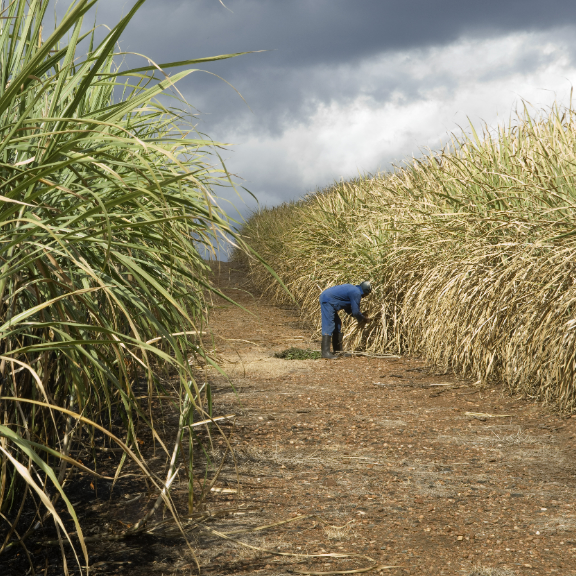Weeding and De-Trashing
Weeding and de-trashing are integral components of effective sugarcane crop management, ensuring that the environment surrounding the sugar plants remains conducive to their optimal growth. These practices go beyond mere aesthetics; they contribute significantly to the overall health, yield, and quality of the sugarcane crop. Let's delve into the intricacies of weeding and de-trashing and understand their role in creating a clean canvas for sugarcane prosperity:
**1. Importance of Weeding: Weeds are unwanted competitors that siphon nutrients, water, and sunlight from sugarcane plants. Effective weeding is crucial during the early stages of sugarcane growth when the crop is vulnerable to competing vegetation. Weeds not only deprive sugarcane of essential resources but also provide hiding places for pests, making weed management a multifaceted necessity.
**2. Methods of Weeding: Weeding can be executed through various methods, each tailored to the specific needs of the sugarcane crop. Manual weeding involves the physical removal of weeds by hand or tools. Mechanical methods, such as rotary hoes or harrows, can cover larger areas efficiently. Herbicides offer a chemical solution, targeting and eliminating weeds while minimizing labor-intensive efforts.
**3. De-Trashing Defined: De-trashing involves the removal of non-sugarcane materials from the field, such as dead leaves, stems, and other crop residues. Trash accumulation can impede sugarcane growth, create favorable conditions for pest infestations, and hinder harvesting operations. De-trashing is particularly essential in sugarcane fields as it enhances air circulation, reduces disease risk, and improves overall crop hygiene.
**4. Methods of De-Trashing: Similar to weeding, de-trashing methods vary based on the scale of cultivation and available resources. Manual de-trashing involves laborers physically removing trash from the fields. Mechanical de-trashing implements, such as rakes or rotary cutters, offer efficiency for larger areas. Some farmers also employ controlled burning, a practice that requires careful consideration of environmental and safety factors.
**5. Timing and Frequency: The timing of weeding and de-trashing activities is critical. Early weeding prevents competition during the critical establishment phase of the sugarcane crop. De-trashing is often done before the crop reaches maturity to facilitate efficient harvesting. The frequency of these activities depends on factors such as weed growth rates, trash accumulation, and the overall health of the sugarcane.
**6. Benefits of Weeding and De-Trashing: The benefits of weeding and de-trashing extend beyond the immediate removal of unwanted vegetation and debris. These practices enhance nutrient availability for sugarcane, reduce the risk of disease, and improve the efficiency of irrigation. Additionally, a clean and well-maintained field facilitates smoother harvesting operations, reducing losses and ensuring a higher quality yield.
**7. Environmental Considerations: While weeding and de-trashing are essential, it's crucial to consider their environmental impact. Sustainable practices, such as adopting organic mulches or cover crops, can mitigate the need for excessive weeding and de-trashing. These practices contribute to soil health and biodiversity while minimizing the environmental footprint of sugarcane cultivation.
In essence, weeding and de-trashing are not mere chores; they are proactive measures to create an environment where sugarcane can thrive. By meticulously managing the weed and trash elements in the field, farmers pave the way for healthier, higher-yielding sugarcane crops, ensuring a sweet harvest and contributing to the sustainability of this vital agricultural industry.

